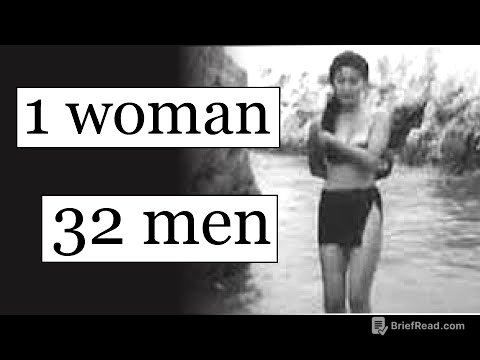TLDR;
The video explains how ancient Jewish wedding traditions mirror the prophetic timeline of Jesus's return. It covers the stages of a Jewish wedding, from arrangement to the final feast, and relates each stage to Christian eschatology, including the rapture and the millennial reign. The video also explores the timing of Jewish weddings, noting preferences for certain times of the year and avoidance of others, and connects these preferences to the fall feasts of Israel, suggesting they serve as rehearsals for the bridegroom's coming.
- Ancient Jewish weddings are prophetic rehearsals for future events.
- Each stage of the wedding mirrors a phase in God's plan for humanity.
- The feasts of Israel are timeline markers leading up to the wedding.
Introduction [0:00]
The speaker introduces the concept that Jesus's references to himself as the bridegroom are not merely poetic but are deeply rooted in the specific steps of ancient Jewish weddings. Understanding these steps provides insight into the current position on the prophetic timeline. The speaker promises to break down these traditions for those unfamiliar and share interesting discoveries about Jewish weddings.
Ancient Jewish Wedding Traditions [0:30]
The ancient Jewish wedding tradition begins with the arrangement, where the groom's father or a matchmaker arranges the marriage. The groom's family negotiates the bride's price, symbolizing her value. In a parallel, God the Father chose the bride (the Church) for His Son before the world's foundation, with Jesus's blood as the price. Next is the Ketuba, a covenant contract outlining the groom's promises and the bride's rights, mirroring the Bible as the covenant between God and His people. Jesus renewed this covenant at the Last Supper. The betrothal involves the couple sharing wine, legally binding them, after which the groom prepares a place for his bride, often an addition to his father's house. This mirrors Jesus preparing a place for His followers.
The Bride's Preparation and the Rapture [2:22]
The groom returns for his bride only with his father's approval, echoing Jesus's statement that only the Father knows the day of His return. While the groom is away, the bride enters a period of consecration, keeping her lamp burning, symbolizing the church age and the purification of the bride. The groom's arrival is announced with a shout and trumpet blast, leading to the rapture, where the bride is lifted to meet him, mirroring Paul's description in 1 Thessalonians 4:16-17.
The Wedding Feast and Consummation [4:01]
After the rapture, the couple consummates their marriage in the bridal chamber, followed by a seven-day celebration. This mirrors the seven-year wedding feast of the Lamb during the tribulation on Earth, as described in Revelation 19:7-9. Following the seven days, a public feast, the marriage supper, occurs, unveiling the bride in her glorified state, representing the redeemed believers joined with Christ in eternity. Every phase of the ancient Jewish wedding was a prophetic rehearsal, a holy rehearsal for a future event.
Timing of Jewish Weddings and the Feasts of Israel [5:52]
Research into Jewish wedding traditions reveals that the timing was influenced by agricultural and spiritual factors, avoiding periods of mourning or major holy days. A preferred time was after the wine harvest (September to October), following Sukkot (Feast of Tabernacles). Tuesdays were also favored, and some communities preferred marrying after the new moon. The period between Passover and Shavuot (Pentecost) was avoided. The feasts themselves foreshadow the wedding, serving as timeline markers leading up to it. Passover through Shavuot represent the betrothal phases, with Shavuot marking the written covenant. The summer gap between Shavuot and Rosh Hashanah (Feast of Trumpets) symbolizes the current age of waiting. The Feast of Trumpets announces the bridegroom's coming, and the bride readies herself during the feasts, with the union occurring once the Father approves. The feasts are not the finish line but the final rehearsal, preparing the bride for the groom's arrival after a sacred pause.









